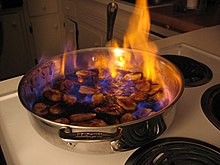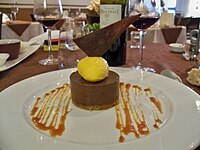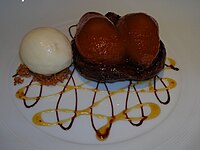

A dessert sauce is a sauce used for desserts. It is drizzled or poured atop various desserts, and is also used for plate decoration. Dessert sauce adds flavor, moisture, texture and color to desserts, may be cooked or uncooked, and is sometimes prepared as a hard sauce with the addition of alcoholic beverages. It is used in various manners to add flavor to and enhance the visual presentation of desserts.







